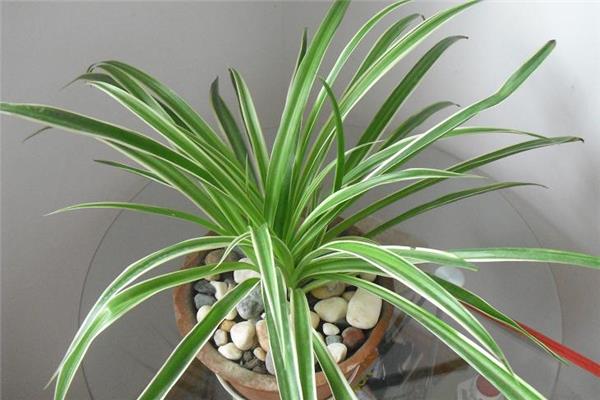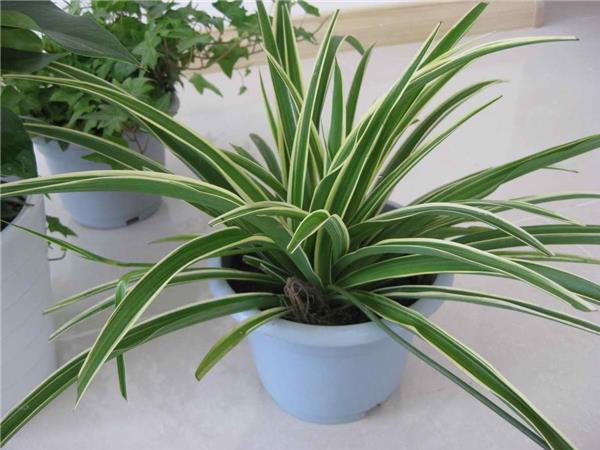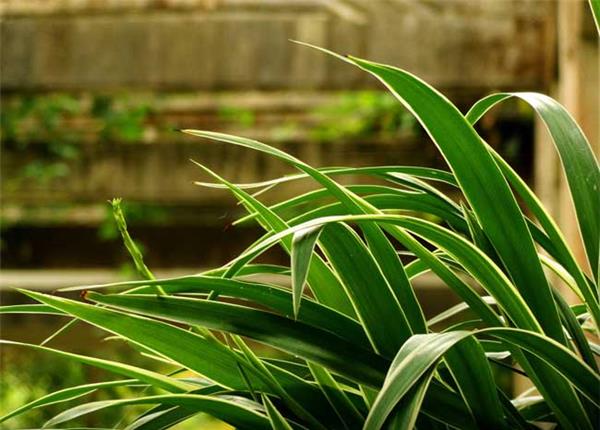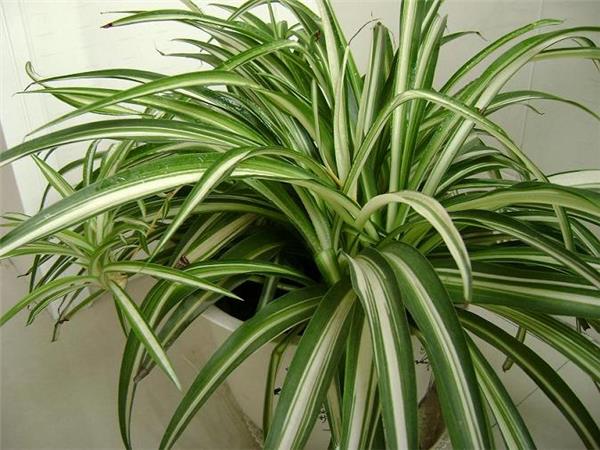Phnom Penh hanging orchid known as air purifier

The breeding way of Phnom Penh Cymbidium
Cuttings: cutting and ramet propagation, which can be carried out at any time from spring to autumn. Cymbidium has strong adaptability and high survival rate, so it is generally easy to reproduce. When planting, as long as the stolon with new buds of 5-10 cm is inserted into the soil, it can take root in about a week, transplant in a pot in about 20 days, and be watered thoroughly and maintained in a shady place.
Split method: when dividing the plant, the orchid plant can be lifted out of the basin, the old soil and rotten root can be removed, and the old root can be cut open, so that there are three stems on the split plant, and then transplanted and cultured respectively. The clustered stems and leaves on the stolon of Cymbidium can also be cut (in fact, it is a new plant larva, with leaves on the top and air roots on the bottom), and can be planted directly in the flowerpot.
Sowing method: the seed propagation of Cymbidium can be carried out in March every year. Because its seed grain is not big, the covering soil above should not be thick after sowing, generally 0.5 cm. Under the condition of 15 ℃, the seeds can germinate in about 2 weeks, and then transplant and culture after the seedlings take shape.

Culture method of Phnom Penh Cymbidium
1. Soil: Phnom Penh has strong adaptability, drought tolerance, but not cold resistance, and does not require strict soil. Generally, it grows better in loose and fertile sandy soil with good drainage.
2. Watering: Phnom Penh hanging orchids like basin soil has sufficient moisture, but has a certain ability to resist drought, appropriate more watering during the generation period, keep the basin soil moist, avoid stagnant water in the basin, and control watering in winter. Usually should pay attention to the leaf surface clean, in the dry season and summer high temperature period, watering should be adequate, basin soil should always keep moist, often spray water around the plant and leaf surface.
3. Lighting: Phnom Penh hanging orchid prefers semi-overcast environment. Spring and autumn should avoid the strong direct sun, the summer sun is particularly strong, can only see some oblique light in the morning and evening, during the day need to cover 50% of the sun 70%, otherwise it will make the leaf tip dry, especially the flower and leaf varieties, more afraid of strong sunlight, Phnom Penh orchids grow more beautiful in places with weak light, yellow edges are more obvious, leaves are brighter. But it should be more sunny in winter in order to keep the leaves tender and fresh green.

4. Temperature: Phnom Penh Cymbidium prefers a warm environment with strong adaptability, and the lowest temperature for overwintering is about 10 ℃.
5. Fertilization: Phnom Penh hanging orchids like fertilizer, such as lack of fertilizer and water, the color of the leaves will become lighter and the leaf tips will be scorched. But do not apply too much fertilizer. Thin fertilizer is applied every half a month or so in the growing season. Nitrogen fertilizer should be controlled for mosaic varieties.
6. Pruning: as the plant grows, the old leaves at the base should be cut frequently in order to maintain a good plant shape.
7. Pests: Cymbidium plants are dense and poorly ventilated, and they are vulnerable to scale insects, so prevention should be given priority to.

It is said that the orchid can absorb more than 80% of the harmful gases in the room and has a very strong ability to absorb formaldehyde. A pot of hanging orchids can extract 8-10 square meters of harmful objects, which is equivalent to an air purifier. Phnom Penh hanging orchids, as a variety of hanging orchids, also have such functions, so they are very suitable for breeding in the bedroom.
- Prev

Planting advantages and techniques of Hanfu apples are good varieties of Hanfu apples
Planting advantages and techniques of Hanfu apples are good varieties of Hanfu apples
- Next

The propagation mode of yellow yellow and the control methods of diseases and insect pests
The propagation mode of yellow yellow and the control methods of diseases and insect pests
Related
- Wuhan Hospital Iron Tree Blooming Result Was Instantly Frightened by the Gardener Master
- Which variety of camellia is the most fragrant and best? Which one do you like best?
- What is the small blue coat, the breeding methods and matters needing attention of the succulent plant
- Dormancy time and maintenance management of succulent plants during dormancy
- Minas succulent how to raise, Minas succulent plant pictures
- What are the varieties of winter succulent plants
- How to raise succulent plants in twelve rolls? let's take a look at some experience of breeding twelve rolls.
- Attention should be paid to water control for succulent plants during dormant period (winter and summer)
- Watering experience of twelve rolls of succulent plants
- Techniques for fertilizing succulent plants. An article will let you know how to fertilize succulent plants.

